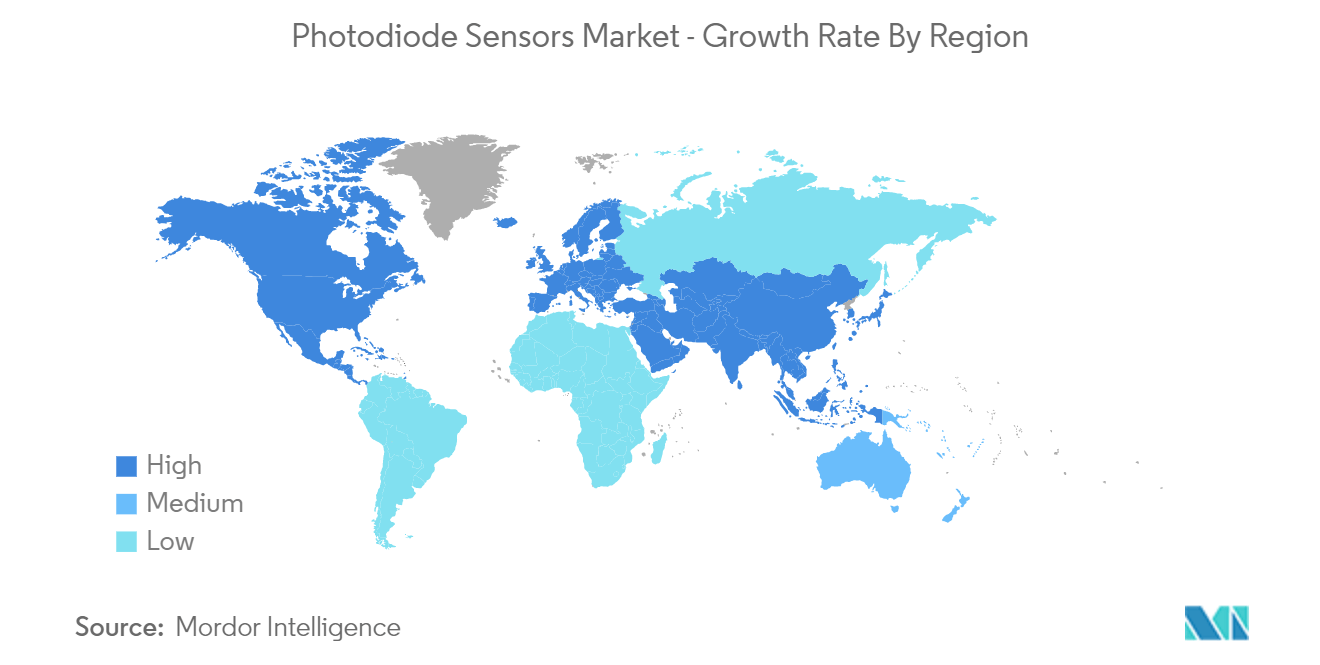Market Trends of Photodiode Sensors Industry
This section covers the major market trends shaping the Photodiode Sensors Market according to our research experts:
Avalanche Photodiodes Sensors Segment will Hold the Prominent Share in the Market
- Optics has impacted people's lives by altering medical practice and presenting fresh solutions to significant health issues. A less invasive approach to treating disease with minimally invasive therapies has been made possible by the growing use of optics and fiber optics. Optics has made it possible for laser surgery, optical diagnostic methods, and visualization of the body's interior. Avalanche photodiodes built into the optical machines used for medical applications have been gaining traction owing to several benefits they offer.
- Avalanche photodiodes (APDs) are photodetectors that use the photoelectric effect to transform light into electricity. They have an integral gain mechanism. Numerous industries use avalanche photodiodes, which are made of materials like silicon, InGaAs, and germanium. The use of the device in the medical field is responsible for the avalanche photodiodes market expansion. For instance, according to MedTech Europe, the annual growth rate recorded for medical devices in Europe was 8.5% in 2020 and 2.9% in 2021.
- Medical equipment, especially diagnostic equipment, has recently seen increased demand in the healthcare industry. Medical equipment that measures blood oxygen levels uses photodiodes. Solid-state detectors built on silicon called avalanche photodiodes (APDs) transform photons into charge currents. For light and x-ray detections, they offer a small, reliable, magnetic field-insensitive solution with gains in the range of 100 and quick response times. APDs are, therefore, widely utilized in the healthcare industry. APDs have many advantages, including quick response times, superior performance, and longer life.
- As, avalanche photodiodes (APDs) are highly sensitive photodetectors with fast rise time and internal gain mechanism and can be operated at high reverse voltage, optic networks built on avalanche photodiodes are increasingly being used in self-driving cars, especially in LiDAR units. This type of photodiodes are expected to be in high demand due to the use of optical distance for speed measurement in self-driving or automated driving vehices, along with their ability to enables environment monitoring, navigation, and potential road risks in addition to traffic sign recognition.
- Furthermore, avalanche photodiodes which are made of silicon are more affordable than other types and have a wavelength range of 450 to 1000 nm, with the maximum sensitivity occurring between 600 and 800 nm. Additionally, silicon-based APDs provide high sensitivity from UV to NIR for low light detection at high speeds, supporting segment growth.

Asia Pacific to Witness the Significant Growth
- The Asia Pacific region is expected to have the largest and fastest-growing photodiode sensors market because of the region's expanding consumer electronics, automotive, and telecommunications industries. Countries like China, Taiwan, South Korea, Japan, and India dominate the consumer electronics market share. This rise in consumer electronics will lead to a rise in the demand for photodiode sensors in the region.
- The International Trade Center observed that China's consumer electronics exports held the largest market share in the world in 2020, including electrical machinery and equipment worth USD 710.1 billion, computers worth USD 440.3 billion, and lighting and lighting and other electronic goods worth USD 110.0 billion. China has also bolstered its position in 2021 and 2022. Therefore it is expected that China will have a prominent role to play in the future growth of the photodiodes market.
- Additionally, Mining, food processing, automotive, aerospace, electronics & semiconductors, and textile are major industries in the Asia Pacific region that support the economies of the region's countries. These industries make use of laser devices and optical scanners for inspection, scanning, mapping, and planning which will boost the deamd for photodiode sensors in the region, supporting the studied market's expansion during the forecast period.
- Furthermore, the growth of the automotive industry is also expected to support the studied market's growth in the Asia Pacific region as automotive manufacturers are continuously focusing on manufacturing automobiles that can match the international standards. This in turn is driving innovations in the photodiode industry as vendors are continuously launching new products to cater to the growing demand.
- For Instance, in June 2021, Samsung Electronics, South Korea, introduced ISOCELL Auto 4AC, an automotive image sensor with advanced 120-decibel (dB) high dynamic range (HDR) and LED flicker mitigation. It includes CornerPixel technology, which includes a specialized pixel structure that reduces LED light above 90 hertz. It embeds two photodiodes within a single pixel area, one 3.0m pixel for viewing low light images and a 1.0m pixel at the corner of the big pixel.


